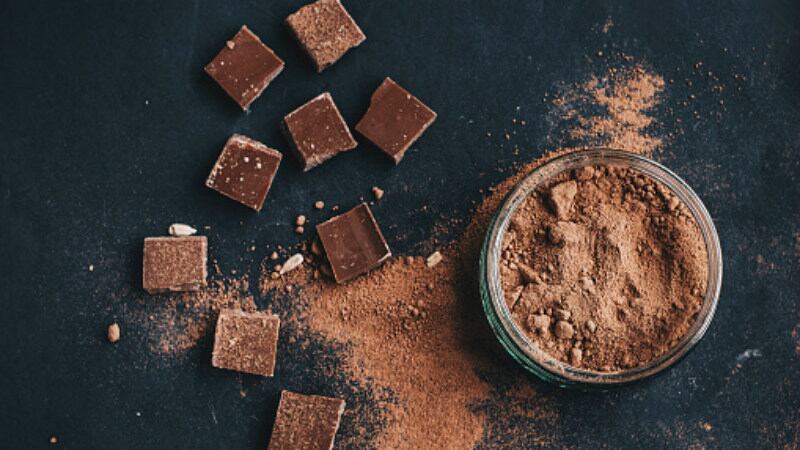The study, conducted by Chungnam National University in South Korea, analysed the chocolate consumption habits, lifestyles, dietary habits and metabolic syndrome profiles of 6,982 South Korean adults aged between 19 to 64 years of age using data from the 2014–2016 Korea National Health and Nutrition Examination Survey.
The consumer group comprised of 3,241 subjects and the non-consumer group contained 3,741 subjects. Metabolic syndrome here was defined as ‘a cluster of cardiovascular disease and diabetes risk factors characterized by abdominal obesity, high fasting glucose level, high triglyceride, low HDL cholesterol, and high blood pressure’.
Overall, chocolate consumers were found to lead healthier lifestyles, eat better and demonstrate better metabolic profiles than non-consumers.
“[In this study, we found] chocolate consumers to be more physically active (56.9% of chocolate consumers exercise vs 51% non-consumers), less likely to smoke (15.6% vs 21%), [paid more] attention to food nutrition labels (37.1% vs 29.7%) and have overall healthier dietary patterns, [consuming] vegetables, fruits, and dairy products more frequently than non-consumers,” said the study authors.
“Furthermore, chocolate consumers were seen to have a 30% lower risk of metabolic syndrome –metabolic profiles [were also markedly better], e.g. lower mean waist circumferences (80.2cm vs 81.3cm) and significantly higher mean HDL cholesterol (52.8 mg/dL vs 51.6 mg/dL)>.
“[Based on] primary analysis, we found an inverse relationship between chocolate consumption and the prevalence of metabolic syndrome among all subjects.”
The study did not differentiate between different types of chocolates, so all of the three major types - dark, milk, and white chocolate – were included in this study. In addition, subjects with existing history of diabetes, hypertension, or dyslipidemia were excluded from the study to prevent the impact of these conditions on dietary patterns as a variable.
Benefits of chocolate
Chocolate and cocoa firm Barry Callebaut welcomed these findings warmly, calling this ‘one more reason to love chocolate’ and adding that one of contributing factors to chocolate’s health benefits is the presence of polyphenols called flavanols.
“It is an EU approved health claim that cocoa flavanols help maintain the elasticity of blood vessels, which contributes to normal blood flow. [These] compounds are naturally occurring in cocoa and chocolate, and play a supporting role in the cardiovascular system,” Barry Callebaut Asia Pacific Head of Marketing Racheal Toh told FoodNavigator-Asia.
“[Maximising] the amount of cocoa flavanols for commercial products [is thus an important part of the chocolate process]. This includes the critical sourcing of cocoa beans with the highest naturally occurring flavanol content, [and R&D such as we have done at Barry Callebaut has led to the development of] a process to retain maximum flavanols during cocoa production - standard processing retains only 9% of cocoa flavanols on average, whereas [we can retain] approximately 50%.”
The study was not able to confirm whether flavanols or other polyphenols were truly the health champions though, mostly due to the complex interactions between cocoa and other components found in chocolate.
“Nutritional epidemiologists have already found that the polyphenols in cocoa have beneficial effects [such as] the prevention of oxidative damage to LDL cholesterol and the disruption of inflammatory atherosclerotic processes, [which] ultimately lead to lower blood pressure and insulin resistance associated with metabolic syndrome,” said the researchers.
“Unfortunately, we were not able to investigate the effects of polyphenols on metabolic syndrome [as] ingredients in chocolate, such as cocoa, sugar, and milk, have different health effects [and we know that] among chocolate consumers, 7% consumed dark chocolate, 92% consumed milk chocolate or snacks covered with milk chocolate, and only 1% consumed white chocolate.
“The situation remains unclear [even though previous research has tried] to examine the effects of different chocolate types on health, [but] the results of the present study show that chocolate consumers enjoyed better health than non-consumers.”
Healthier types of chocolate
So although deeper analysis of the different type of chocolates and the root cause for chocolate’s health benefits is still required, what is clear is that chocolate consumption does have positive effects, and these can be enhanced further if consumers opt for healthier options – such as this ‘guilt-free’ chocolate from Japan’s True Food and Design.
The firm’s True Food Chocolate contains just six ingredients only: cacao, coconut, chicory, vanilla, hemp seed, and monk fruit, and its sugar-free recipe gives it an edge over regular chocolate when it comes to metabolic syndrome, as a lot of scientific evidence has already indicated that sugar consumption is associated with increased risk of these.
“We believe our products can make an impact on the market as a new type of chocolate,” True Food and Design Founder and CEO Hisae Mukuno told us.
“Conventional chocolates are often stereotyped as containing a lot of sugar and fat and being bad for health – [we want] to change that, as well as try to enter the vegan and plant-based chocolate market [in Japan].”
Barry Callebaut is also looking to focus on the sugar-free chocolate market – similar to True Food and Design, its sugar-free sweetener of choice is monkfruit.
“Indulging in chocolate does not need to mean putting our health second to taste – There are many innovations in chocolates today, [such as our] chocolate powder made with monk fruit which makes a rich, tasty and satisfying chocolate drink without the guilt from the excessive sugar and calorie intake,” said Toh.
“So for those who are health-conscious but with a soft spot for chocolates, such alternatives might just be the answer.”
Toh also highlighted the biggest trends for chocolate today as: sugar-free, plant-based, vegan, sugar-reduced, enriched with proteins, vitamins or other nutrients, organic, and sustainable.
Study: Chocolate consumption and the prevalence of metabolic syndrome in the Korean adult population: an analysis based on the 2014-2016 Korea National Health and Nutrition Examination Survey
Source: Nutrition Research and Practice
Authors: Kim, N.R. and Jeon, N.S.





